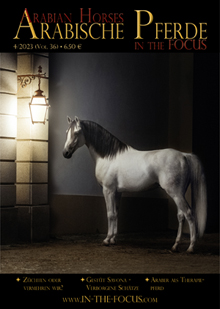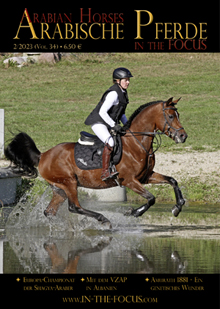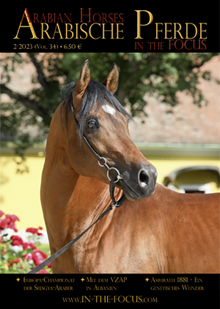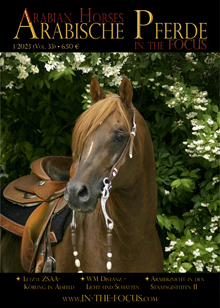The hardship of life with the Bedouins in the desert created a very special horse. At the beginning of the 19th Century, these Bedouin horses came to Austria-Hungary and formed the foundation of what was later called the Shagya-Arabian breed.
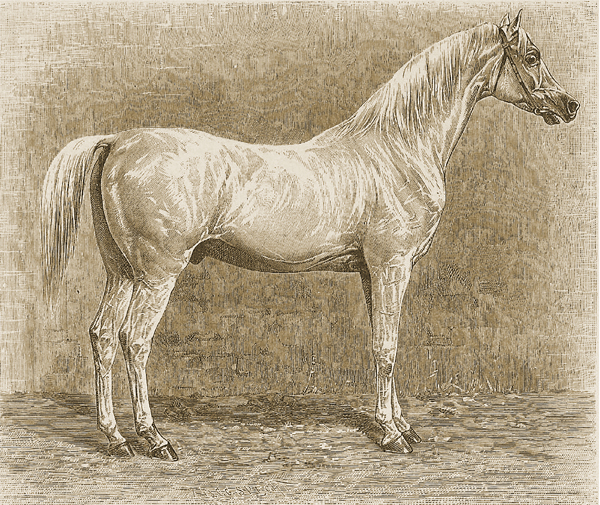
Desertbred stallion Tajar, born 1801 (not to be confused with the stallions at Weil Stud of the same name). He was the ideal for any horse breeder at the beginning of the 19th century. The stallion was purchased by Baron von Fechtig in 1811 at an auction in Cairo, and was owned before by a Mamluk Sheikh, who was killed by Mohamed Ali. Most likely, it was Latif Bey, who bought the stallion from the stud of Murad Bey (in Gizeh, near Cairo), which was destroyed by Napoleon I. When he arrived by ship in Trieste, he was bought by Count Hunyady von Kétely for his stud Ürmény in Hungary. There, he sired 206 foals of excellent quality until 1826.
The first purchases of Original Arabians from the Arabian peninsula were made at the beginning of the 19th Century. The biggest role played the State Studs of the then Austrian Empire, of which Hungary was a part, but also the King of Wuerttemberg and noble landlords in Poland and Ukrania. Those Original Arabs imported by the State Studs often found their way first into the Imperial and Royal Stud of Lipica. Once they were unloaded in Trieste, the horses were brought after the arduous sea voyage temporarily to his stud in the Karst region. Some of them stayed there for several years, formed their own stud department or were integrated into the Lipizzan breed.
The Anti-Napoleonic War of the European powers, which had formed an alliance after the “Vienna Congress” (September 1814) – among them also the Austrian Monarchy – led to the final defeat of Napoleon Bonaparte in the Battle of Waterloo (18th June 1815) and to the occupation of large parts of France. This way, Austrian Cuirassiers captured at the French stud Rosière aux Saline, 10 km Southeast of Nancy, a number of breeding stallions. Napoleon had brought home several horses from the desert during his Egyptian Campaign in 1798.
Baron von Fechtigs Imports

Kuhaylan Zaid db, born 1923, bred by the Ruala bedouins (Kuhaylan Abu Junub / Kuhaylah Al Ziyadah). He was chief sire in Bábolna from 1931 to 1946. In 1930, Carl Raswan and Bogdan Zientarski were commissioned by Roman Sanguszko, the owner of Gumniska Stud, to purchase suitable desertbreds from the country of origin. This was the last opportunity to purchase horses from migrating Bedouins. Bábolna also ordered one excellent stallion. During six months, they looked at about 10.000 horses and finally purchased five stallions and four mares that they transported across the Libanon to Constanta at the Black Sea coast. Kuhaylan Zaid left many foundation mares and two chief sires.
Around the same time, Baron von Fechtig started his enterprise to import Arabian horses from the Orient. As a merchant, von Fechtig also was on the lookout for Original Arabs from the desert, for which he had built over time a large and especially wealthy clientele in Europe. In 1811, his first transport of horses arrived from Cairo in Trieste, and the four Oriental stallions were sold for good money to Count Festetics, Fenék-Puszta Stud, and Count Esterházy, Ozora Stud. In 1817, he delivered the significant sires Samhan and Massoud for Fenék-Puszta, whose offspring were distinguished by fertility and longevity. Von Fechtig also imported the famous flea-bitten grey stallion Tajar, who became a legend not only for to his life story but also for his offspring. Count Hunyady von Kéthely bought him in 1811 from Baron von Fechtig for his Ürmeny Stud, which he had founded at the beginning of the 19th Century with the help of the most well-known Austrian horse experts, k.k. Royal Stud Inspector Johann Christoph Justinus and Estate Manager Appel von Kápotsány. During his trips to Egypt and Syria, von Fechtig instructed several experts in Cairo, Aleppo, and Damascus with purchasing those sought-after and in Europe at the time rare horses, which were brought by boat to Trieste. From here, but also from the collection point in Bábolna, they were sold to the wealthy customers.
In 1816, von Fechtig came back to Trieste from this third trip to the Orient. He brought four stallions and eight mares, of which two stallions (among them Bairaktar, born 1814) and one mare (Murana I, born 1808) were sold to the Royal Stud of Weil. The stallions Siglavi Gidran (born 1811) and Ebchan (born 1812), as well as the mare Tiffle (born 1810), were sold to Bábolna.
On 18th March 1816, the “Instructions” to define the breeding goal at the “Royal Hungarian State Stud” were issued, ordered by Emperor Josef II. of Habsburg. The foundation of horse breeding at Bábolna was laid a couple of years earlier, before the foundation of the Stud on 24th June 1789. In his book “About the General Principles of Horse Breeding”, Justinus makes the following claims for any breeding stock: 1. Proven descent, 2. proven performance, 3. proven heredity. In Europe, we owe this work the introduction of studbooks (or herdbooks, registries) in animal breeding in the 19th Century.
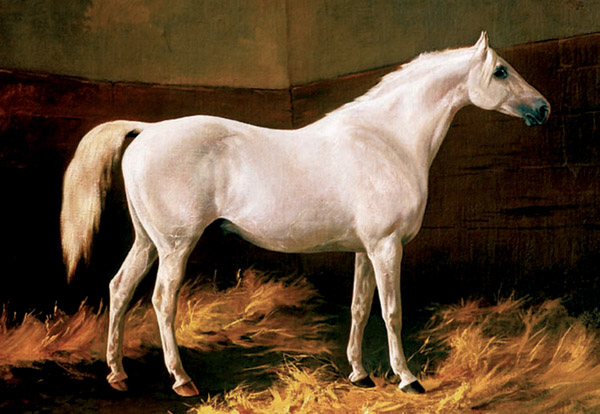
Shagya-Arabian stallion Shagya X, born 1855 at Mezöhegyes (Shagya IV, 1841, Bábolna / 302 Samhan, 1845 Mezöhegyes). He was an exceptional sire, who sired several chief sires for Bábolna, Mezöhegyes and Radautz. The founder of the Shgaya strain is the stallion Shagya, born 1830, bred by the Bani Saher Bedouins, imported by Baron von Herbert on the occasion of this purchasing commission in 1836 to Syria, Aleppo and Damascus. This expedition was an important success. Five mares and nine stallion were delivered healthy at Bábolna, among them Shagya, who was – according to the studbook – a dappled grey of 160 cm. He was not only harmonious but also very strongly built, well muscled and nobel.
The Foundation of Bábolna
On highest decree, it was ordered that Bábolna becomes an “excellent pure and noble stud”, which laid the foundation for its later development. In 1836, General Major Count Heinrich Hardegg, Chief of the k.k. Studs ordered Baron Major Eduard von Herbert to undertake the first expedition to purchase Original Arabs in Syria and to bring them to Bábolna. On this occasion, the stallion Shagya was purchased in 1836 from the Bani Saher Bedouins, who later gave the breed its name.
Bruno Furrer









